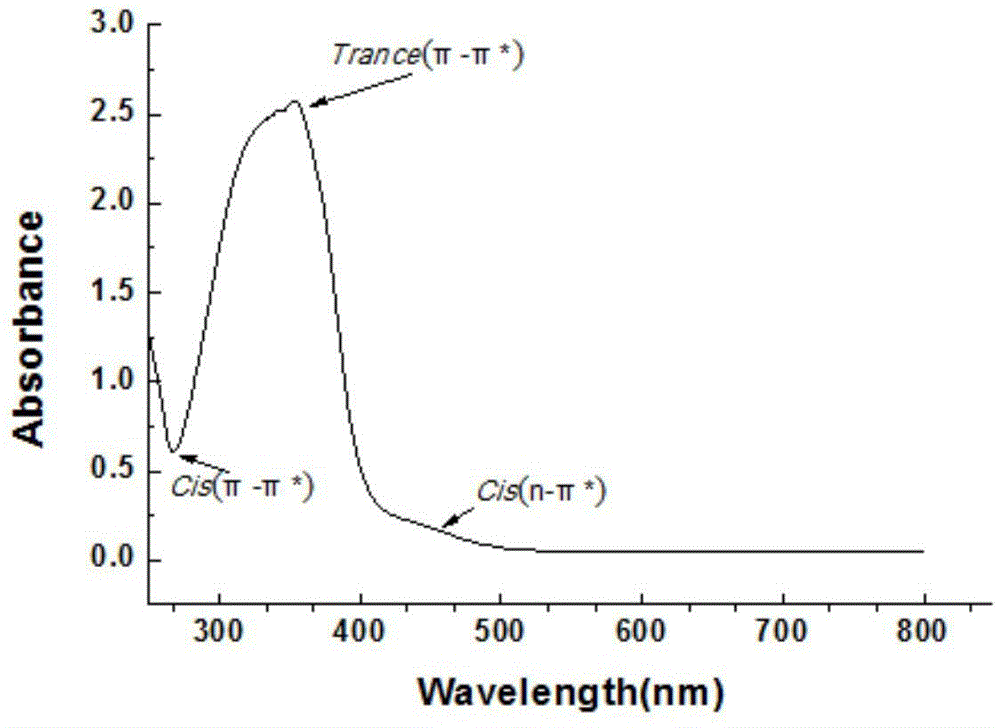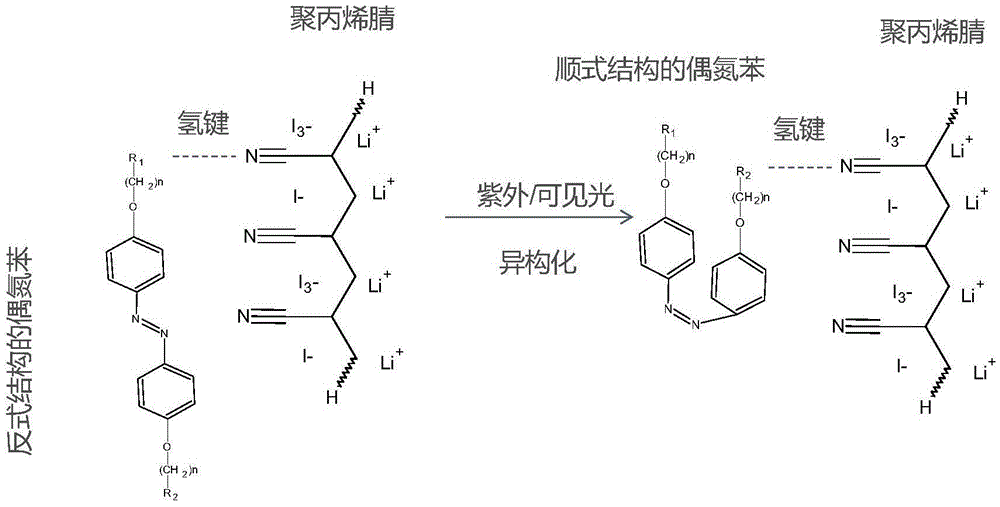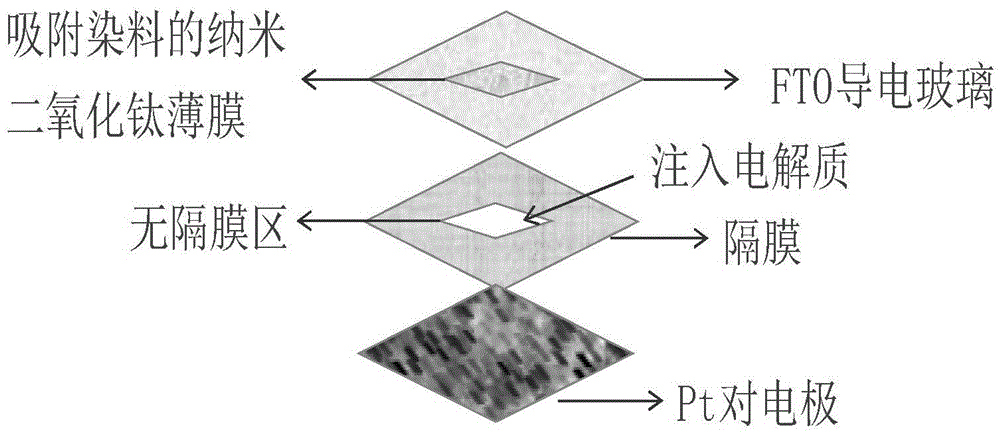Photo-responsive gel electrolyte and preparation method and application thereof
A gel electrolyte, light-responsive technology, applied in the field of dye-sensitized solar cells, can solve the problems of performance degradation, shortened service life, low ionic conductivity, etc. Effect
- Summary
- Abstract
- Description
- Claims
- Application Information
AI Technical Summary
Problems solved by technology
Method used
Image
Examples
Embodiment 1
[0061] Embodiment 1 does not contain the polyacrylonitrile gel electrolyte of azobenzene
[0062] Component one: pure PAN powder (weight average molecular weight is 150000);
[0063] Component two: using acetonitrile as solvent, dimethyl propylimidazolium iodine, 4-tert-butylpyridine, I 2 , The concentration of the substance of LiI is 0.3mol / L, 0.5mol / L, 0.05mol / L, 0.5mol / L, and the electrolyte is obtained by configuration;
[0064] Mix component 1 and component 2 at a mass ratio of 1:20, and mix well to obtain a polyacrylonitrile gel electrolyte.
Embodiment 2
[0065] Example 2 The mass ratio of azobenzene to polyacrylonitrile is a gel electrolyte of 1:99
[0066] Component 1: Add 0.005g of Azo11OHOH to 15mL of N,N-dimethylformamide organic solution containing 0.495g of polyacrylonitrile (weight average molecular weight: 150,000), stir at 60°C for 6 hours, add ethanol to precipitate the product, Grinding at room temperature, grinding to remove residual N,N-dimethylformamide in a fume hood to obtain a powdery solid, which was dried under vacuum at 60°C for 24 hours to obtain Azo11OHOH / polypropylene with a mass fraction of Azo11OHOH of 1%. Nitrile mixture, named 1% Azo11OHOH / polyacrylonitrile mixture;
[0067] Component two: using acetonitrile as solvent, dimethyl propylimidazolium iodine, 4-tert-butylpyridine, I 2 , The concentration of the substance of LiI is 0.3mol / L, 0.5mol / L, 0.05mol / L, 0.5mol / L, and the electrolyte is obtained by configuration;
[0068] Mix component 1 and component 2 at a mass ratio of 1:20, and stir evenly to...
Embodiment 3
[0069] Example 3 The mass ratio of azobenzene to polyacrylonitrile is a gel electrolyte of 1:4
[0070] Component 1: Add 0.1g of Azo11OHOH to 15mL of N,N-dimethylformamide organic solution containing 0.4g of polyacrylonitrile (weight average molecular weight: 150,000), stir at 60°C for 6 hours, add ethanol to precipitate the product, Grind at room temperature, and grind to remove residual N,N-dimethylformamide in a fume hood to obtain a powdery solid. After vacuum drying at 60°C for 24 hours, Azo11OHOH / polypropylene with a mass fraction of Azo11OHOH of 20% is obtained Nitrile mixture, named 20% Azo11OHOH / polyacrylonitrile mixture;
[0071] Component two: using acetonitrile as solvent, dimethyl propylimidazolium iodine, 4-tert-butylpyridine, I 2 , The concentration of the substance of LiI is 0.3mol / L, 0.5mol / L, 0.05mol / L, 0.5mol / L, and the electrolyte is obtained by configuration;
[0072] Mix component 1 and component 2 at a mass ratio of 1:20, and stir evenly to obtain a 20...
PUM
 Login to View More
Login to View More Abstract
Description
Claims
Application Information
 Login to View More
Login to View More - R&D
- Intellectual Property
- Life Sciences
- Materials
- Tech Scout
- Unparalleled Data Quality
- Higher Quality Content
- 60% Fewer Hallucinations
Browse by: Latest US Patents, China's latest patents, Technical Efficacy Thesaurus, Application Domain, Technology Topic, Popular Technical Reports.
© 2025 PatSnap. All rights reserved.Legal|Privacy policy|Modern Slavery Act Transparency Statement|Sitemap|About US| Contact US: help@patsnap.com



